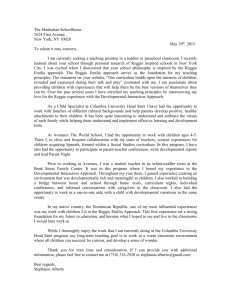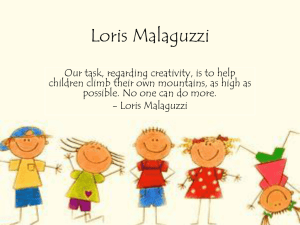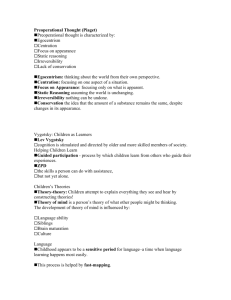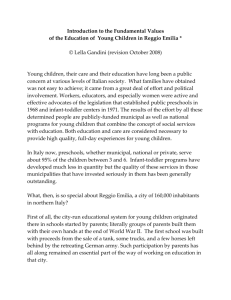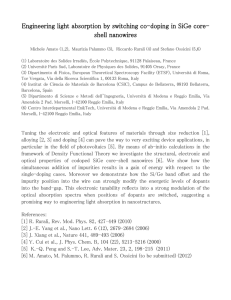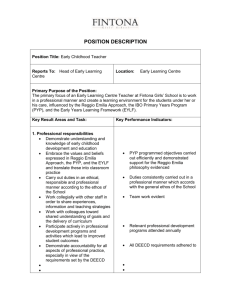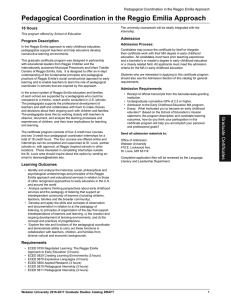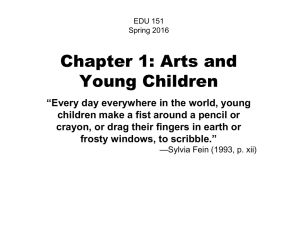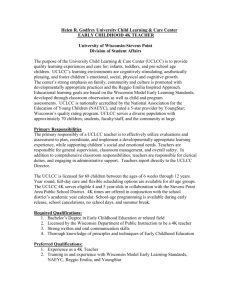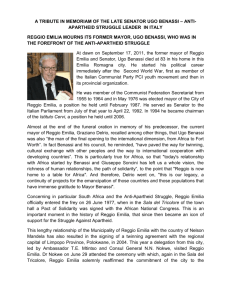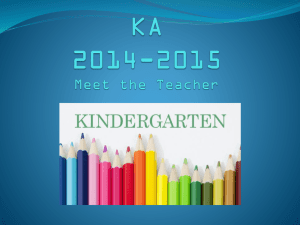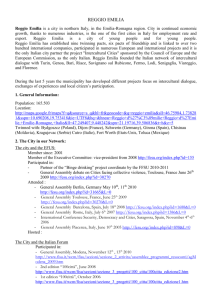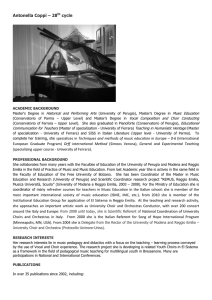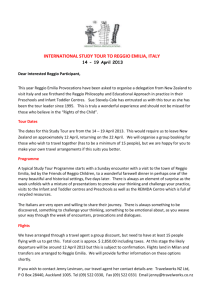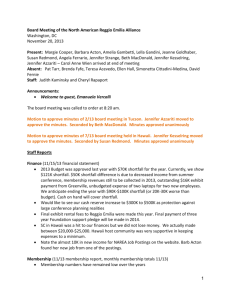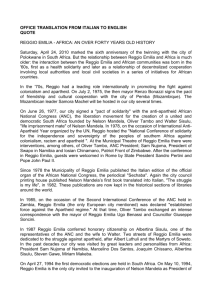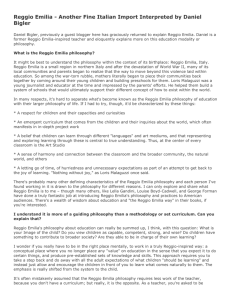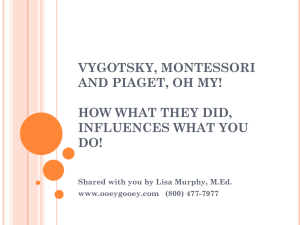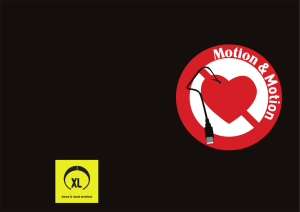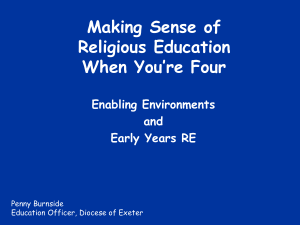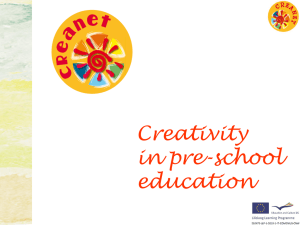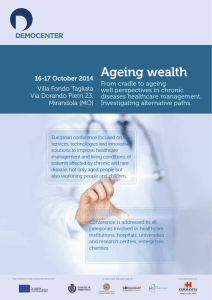Theoretical Foundations
advertisement
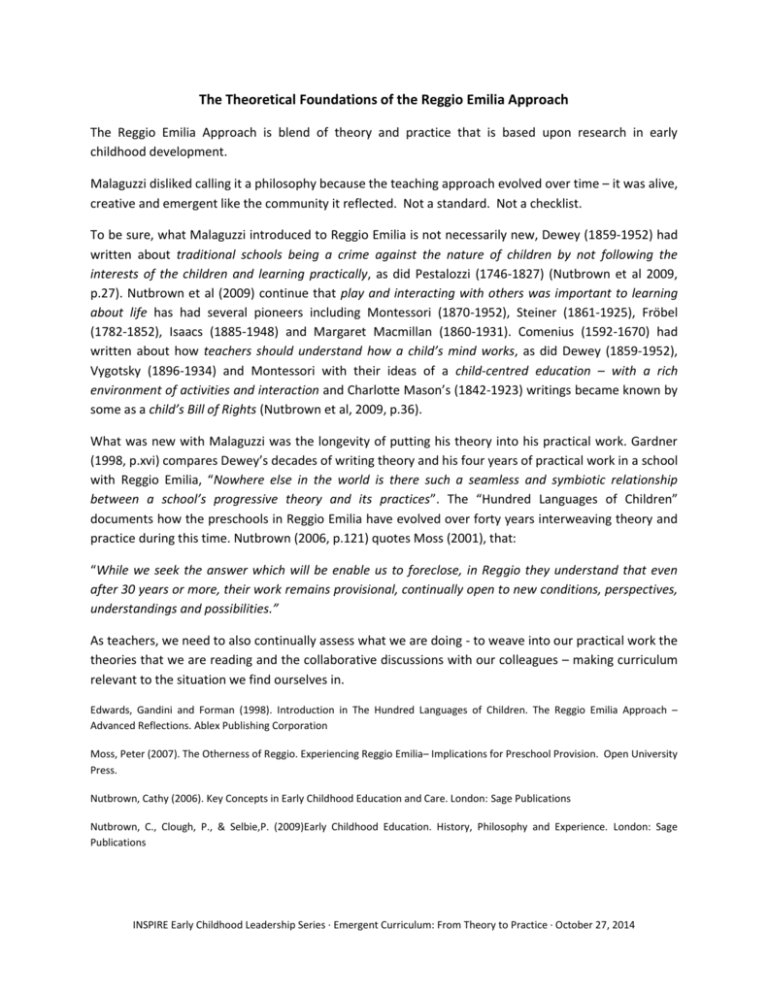
The Theoretical Foundations of the Reggio Emilia Approach The Reggio Emilia Approach is blend of theory and practice that is based upon research in early childhood development. Malaguzzi disliked calling it a philosophy because the teaching approach evolved over time – it was alive, creative and emergent like the community it reflected. Not a standard. Not a checklist. To be sure, what Malaguzzi introduced to Reggio Emilia is not necessarily new, Dewey (1859-1952) had written about traditional schools being a crime against the nature of children by not following the interests of the children and learning practically, as did Pestalozzi (1746-1827) (Nutbrown et al 2009, p.27). Nutbrown et al (2009) continue that play and interacting with others was important to learning about life has had several pioneers including Montessori (1870-1952), Steiner (1861-1925), Fröbel (1782-1852), Isaacs (1885-1948) and Margaret Macmillan (1860-1931). Comenius (1592-1670) had written about how teachers should understand how a child’s mind works, as did Dewey (1859-1952), Vygotsky (1896-1934) and Montessori with their ideas of a child-centred education – with a rich environment of activities and interaction and Charlotte Mason’s (1842-1923) writings became known by some as a child’s Bill of Rights (Nutbrown et al, 2009, p.36). What was new with Malaguzzi was the longevity of putting his theory into his practical work. Gardner (1998, p.xvi) compares Dewey’s decades of writing theory and his four years of practical work in a school with Reggio Emilia, “Nowhere else in the world is there such a seamless and symbiotic relationship between a school’s progressive theory and its practices”. The “Hundred Languages of Children” documents how the preschools in Reggio Emilia have evolved over forty years interweaving theory and practice during this time. Nutbrown (2006, p.121) quotes Moss (2001), that: “While we seek the answer which will be enable us to foreclose, in Reggio they understand that even after 30 years or more, their work remains provisional, continually open to new conditions, perspectives, understandings and possibilities.” As teachers, we need to also continually assess what we are doing - to weave into our practical work the theories that we are reading and the collaborative discussions with our colleagues – making curriculum relevant to the situation we find ourselves in. Edwards, Gandini and Forman (1998). Introduction in The Hundred Languages of Children. The Reggio Emilia Approach – Advanced Reflections. Ablex Publishing Corporation Moss, Peter (2007). The Otherness of Reggio. Experiencing Reggio Emilia– Implications for Preschool Provision. Open University Press. Nutbrown, Cathy (2006). Key Concepts in Early Childhood Education and Care. London: Sage Publications Nutbrown, C., Clough, P., & Selbie,P. (2009)Early Childhood Education. History, Philosophy and Experience. London: Sage Publications INSPIRE Early Childhood Leadership Series ∙ Emergent Curriculum: From Theory to Practice ∙ October 27, 2014
